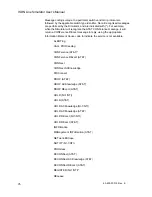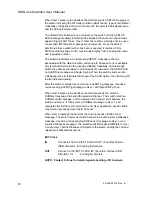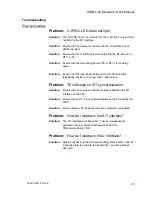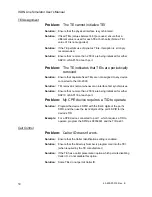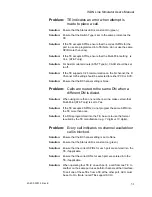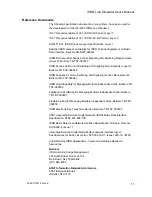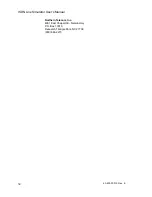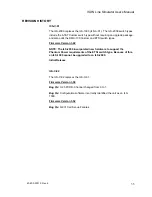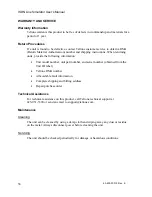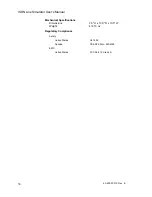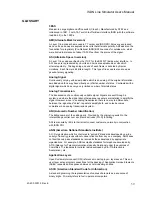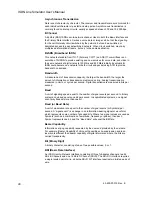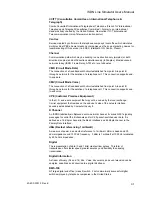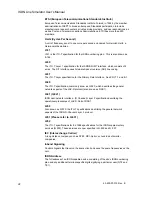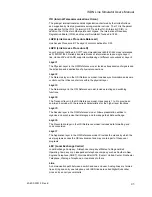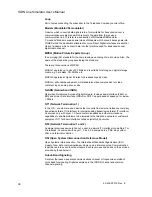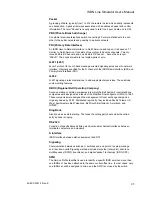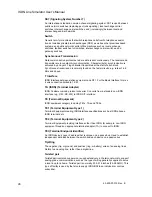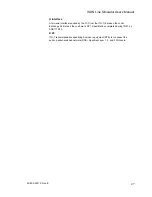
ISDN Line Simulator User’s Manual
40-400-00012, Rev. E
40
Asynchronous Transmission
Data is sent character by character. The receiver and transmitter are synchronized for
each individual character via a start and stop pulse. Asynchronous transmission is
normally found on dial up circuits, usually at speeds between 300 and 19,2000 bps.
B Channel
A 64 Kb/s (DS0) ISDN user-to-network channel. Used in both the Basic Interface and
the Primary Rate Interface. Carries a voice, data or image call, but not the signaling
for the call. Normally circuit-switched by the network, but can be a switched or
dedicated access to a packet-switched network. When circuit switched, may carry
multiplexed information streams, but only to the same destination.
B-ISDN (Broadband ISDN)
This network standard from ITU-T (Formerly CCITT) an ANSI T1 committees is an
evolution of N-ISDN to provide existing and new services for voice, data, and video in
the same network at digital rates to 150 Mb/s and 600 Mb/s initially. Eventually B-
ISDN could become one network for both circuit and packet using ATM to provide
bandwidth on demand.
Bandwidth
A measurement of transmission capacity; the larger the bandwidth, the larger the
amount of information or transmission medium can carry. Analog transmission is
measured in Hertz, or cycles per second. Digital transmission is measured in bits per
second.
Baud
A unit of signaling speed, equal to the number of signal events per second. In binary
systems, one baud equals one bit per second. In sophisticated systems, one signal
event may transmit more than one bit.
Baud (or Baud Rate)
A unit of modulation rate, equal to the number of signal events (or Symbols) per
second. A “signal event” is a change in an information-bearing signal or waveform,
which represents some number of encoded bits. Where two signal values are used as
Symbols (such as a combination of amplitude, frequency or phase), then each
Symbol represents one bit, and the “Baud Rate” will equal the Bit Rate.
Bearer Capability
Information carrying capability requested by the user and provided by the network.
For example, Bearer Capability of Voice with possible echo-suppression and loss-
insertion is different than bearer capability of digital information where the bits are
carried transparently.
Bit (Binary Digit)
A binary character, consisting of one of two possible values: 0 or 1.
BRI (Basic Rate Interface)
An ISDN User-to-Network Interface consisting of three full-duplex channels; two 64
Kb/s B Channels and one 16 Kb/s D Channel (2B+D). The 2B+D U interface requires
a single twisted pair of wire, while the 2B+D S/T interface requires two twisted pairs of
wire.

